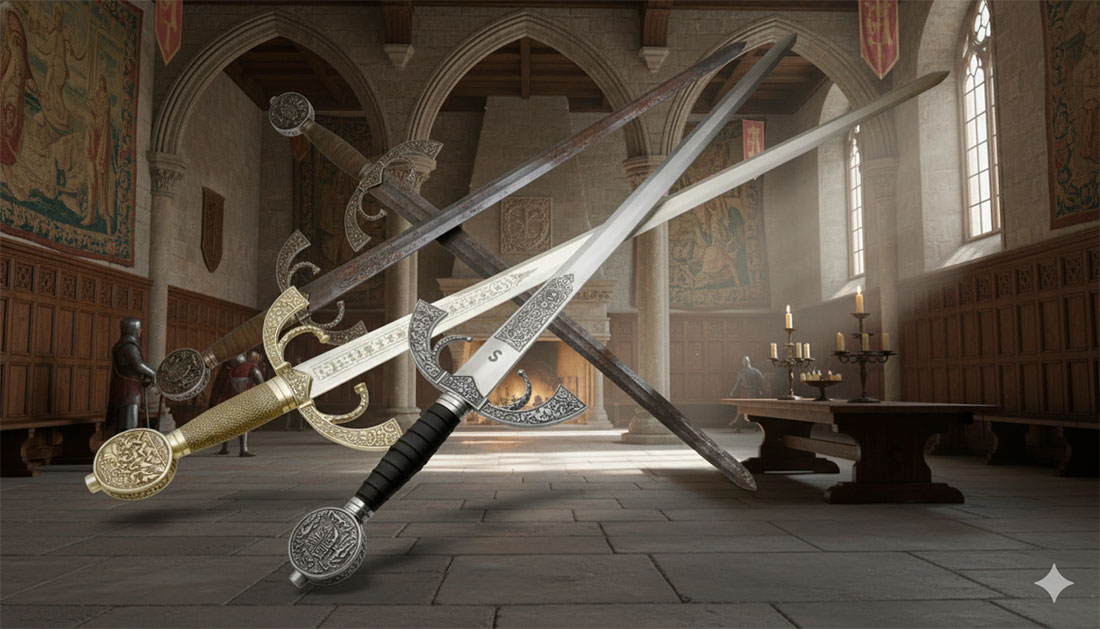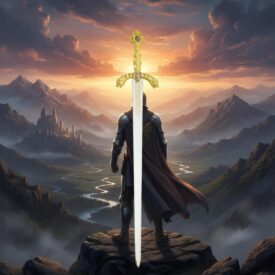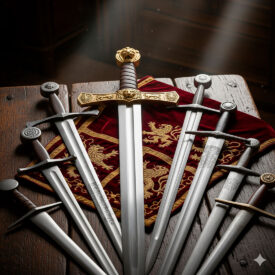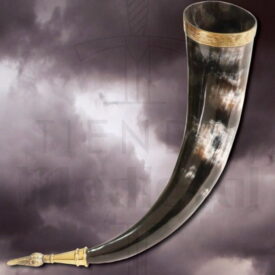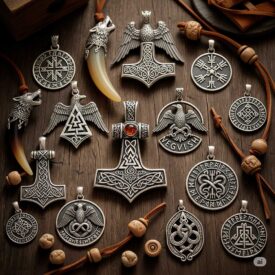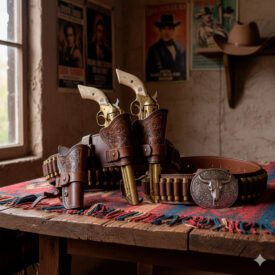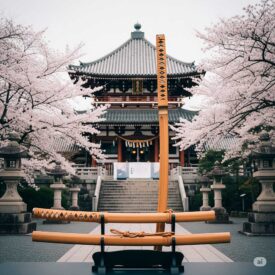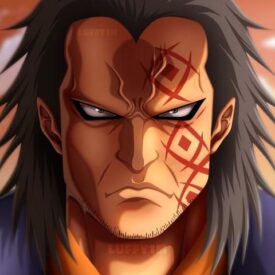The True Story of the Great Captain’s Sword: Between Myth and Reality
What secrets does the legendary sword of the Great Captain, Gonzalo Fernández de Córdoba, hide? Was it one or were there several? Delve into the fascinating journey of this symbol of power and strategy, where historical facts intertwine with legends, revealing a legacy as complex as it is captivating.
Gonzalo Fernández de Córdoba: The Strategist Who Forged History
Gonzalo Fernández de Córdoba, a monumental figure in the Spain of the Catholic Monarchs, not only conquered Granada but redefined the art of war. It was in the campaigns of Sicily and Naples where he forged his nickname: the “Great Captain.” His brilliant mind as a military strategist transformed the Spanish infantry into an unstoppable force. Did you know he said that «they had not fought with men but with devils» after fighting against him?
He introduced tactical innovations that endure to this day: he prioritized infantry, imposed strict discipline, and cultivated in his men an unwavering body pride and a deep sense of honor. He was a master in coordinating infantry, cavalry, artillery, and even naval support, moving his troops with unparalleled skill to bring the enemy to the most favorable terrain.
The Shadow of the Great Captain’s Swords: A Confusing Legacy
When we speak of the Great Captain’s sword, history becomes a labyrinth. We are not talking about a single weapon, but several, each with its own story and destiny. Five swords in total are attributed to him, each shrouded in mystery and controversy.
The Ceremonial Sword or Pontifical Estoc: A Gift from the Pope
One of the most famous is the pontifical estoc, believed to have been a gift from Pope Alexander VI himself around 1500, 1503, or in 1497. The reason? His role as the great defender of Christianity. This gift, which included the biretta and the Golden Rose, symbolized recognition of his leadership. This estoc has been the object of fascinating vicissitudes throughout the centuries.

The Combat Sword: Witness to Battles
In addition to the parade sword, a robust combat sword is attributed to him, a weapon worthy of a warrior who revolutionized battlefields. This type of estoc, with a wide, straight blade, perfectly adapted to his tactical innovations. This valuable piece remains in the possession of the Fernández de Córdoba lineage, an invaluable treasure that has remained with the family for centuries.
The Mystery of the 1671 Robbery
The pantheon of the Monastery of San Jerónimo in Granada guarded a sword attributed to the Great Captain, but in 1671, a carpenter unveiled a shocking truth: the displayed sword was a crude wooden replica. The original, described with a gilded silver hilt and green enamels, had disappeared between 1662 and 1671. A secret inquest attempted to unravel the mystery, but the whereabouts of the authentic pontifical sword remain unknown, likely in a private French collection.
Chronology of the Great Captain’s Swords: A Journey Through Time
To better understand the complex journey of these legendary swords, we present a detailed chronology of the most significant events related to the weapons attributed to Gonzalo Fernández de Córdoba and their conservation.
| Era | Event |
|---|---|
| Life and granting of swords to Gonzalo Fernández de Córdoba | |
| Sep 1, 1453 | Birth of Gonzalo Fernández de Córdoba in Montilla (Córdoba). |
| Late 15th century | A combat sword with an ivory hilt is attributed to him, which remains in the Fernández de Córdoba lineage along with its scabbard and belt. |
| 1492 | He played a prominent role in the culmination of the Reconquista with the capture of the Nasrid kingdom of Granada. |
| 1497 | Triumphant entry into Rome after liberating the port of Ostia. It is believed that in this context, Pope Alexander VI presented him with the Golden Rose, a blessed estoc, and the biretta, although contemporary sources do not expressly mention it. |
| c. 1503 | Possible delivery of a dress sword or gala sword (luxurious Renaissance model) attributed to a pontifical gift for the defense of Christianity; the inscription on one of the swords in the Royal Armory alludes to victories in Italy and seems to date the piece after the 1504 campaign. |
| 1504 | Appointment of Gonzalo Fernández de Córdoba as Viceroy of Naples (position until 1507). |
| 1515 | Death of the Great Captain. |
| Vicissitudes and conservation of the swords | |
| 1523–1534 (pontificate of Clement VII) | A sword linked to the Great Captain in the Monastery of San Jerónimo bears the inscription of Clement VII; the anachronism suggests that it may have been a gift to the Count of Cabra (son-in-law) between 1523 and 1525, not to Gonzalo himself. |
| Oct 5, 1552 | Transfer of the Great Captain’s remains to the Monastery of San Jerónimo in Granada. |
| Dec 2, 1552 | The estoc carried by Juan Peláez de Berrio during the transfer — with gold and silver fittings — is returned to the Duke of Sessa by decision of the prior, as it was considered not to belong to the Great Captain. |
| 1621 | A sword attributed to the Great Captain (with inscriptions and decorations about his battles in Italy) appears in the inventory of the Royal Armory of Madrid; it has been preserved there ever since. It is possible that it was delivered by the Duke of Sessa to the Crown. |
| c. 1663 – 1671 (before Mar 24) | The estoc that was kept on the high altar of the Monastery of San Jerónimo is stolen and replaced by a crude wooden replica. The friars describe the stolen piece as having a montante-style hilt, entirely of gilded silver, with the name of the Pontiff and the keys of Saint Peter. |
| Mar 24, 1671 | A secret inquest is initiated for the theft of the Great Captain’s sword in the Monastery of San Jerónimo. |
| Aug 16, 1716 | A sword attributed to the Great Captain (with a very fine blade and ivory hilt), which was never in the convent, is added to an entail by the 3rd Marquis of Algarinejo; the piece had been a gift from the Duke of Sessa to the Marquis of Valenzuela. |
| Spring 1810 | The popular belief circulates that the French general Horace Sébastiani stole the sword and desecrated the tomb in the Monastery of San Jerónimo during the Napoleonic occupation; other sources indicate that the swords were no longer there at that time. |
| 1812 | There are references attributed to Marshal Sébastiani about the theft of the Great Captain’s sword and skull, although the accuracy of the event is debated. |
| Today | Several swords attributed to the Great Captain are preserved. The best-known dress sword dates back to his triumphs in Italy (c. 1503–1504) and is documented in the Royal Armory since 1621; its model is faithfully reproduced today. The ceremonial estoc from the mausoleum was stolen between 1663 and 1671 and replaced by a replica. |
Replica Designs: Forging the Legacy of the Great Captain
Although the original swords are veiled by mystery and time, the spirit of the Great Captain lives on in the replicas forged today. Modern replicas usually feature a design that seeks maximum historical fidelity, with straight, narrow blades and round, flat pommels. The guard and pommel, often made of solid brass, reflect the artisanal mastery of yesteryear. Some masters, like Arellano, use exclusive techniques to achieve rustic, mirror, or aged finishes, evoking the authenticity of a piece forged in the heat of battle.
We Clear Up Unanswered Questions About the Great Captain’s Sword
What is the story behind the theft of the Great Captain’s dress sword?
The Great Captain Gonzalo Fernández de Córdoba’s dress sword was stolen in 1671 from the pantheon of the San Jerónimo monastery in Granada. According to the police report, a carpenter working on site discovered the theft when he tried to look closer at the sword and found that it was a fake made of wood, not metal, which revealed that the switch had been made without anyone knowing when. A judicial investigation was launched, in which the entire monastic community was interrogated, but the whereabouts or authorship of the robbery were never clarified.
Subsequently, during the War of Independence in 1810, General Sebastiani’s French troops desecrated the Great Captain’s tomb and, upon fleeing in 1812, took his skull and what was probably a replica of the dress sword, as the original had already been stolen in the 17th century. Since then, both the skull and the supposed sword remain missing.
What characteristics make the Great Captain’s sword unique?
 The Great Captain’s sword is distinguished by its hand-forged blade, usually made of high-quality steel, which guarantees strength and authenticity. Its ergonomic hilt is usually made with robust wood and other durable materials, providing comfort and solidity. In addition, it features meticulous decorative details, such as engravings, chiselled foliage, and historical motifs, especially on the guard and pommel, which are often gilded and adorned with battle scenes or commemorative symbols. Its design combines functionality and aesthetics, reflecting both the prestige of the Great Captain and the artisanal tradition of historical fencing.
The Great Captain’s sword is distinguished by its hand-forged blade, usually made of high-quality steel, which guarantees strength and authenticity. Its ergonomic hilt is usually made with robust wood and other durable materials, providing comfort and solidity. In addition, it features meticulous decorative details, such as engravings, chiselled foliage, and historical motifs, especially on the guard and pommel, which are often gilded and adorned with battle scenes or commemorative symbols. Its design combines functionality and aesthetics, reflecting both the prestige of the Great Captain and the artisanal tradition of historical fencing.
How did the Great Captain’s sword influence his military strategy?
The Great Captain’s sword, more than just a personal weapon, symbolizes his leadership and innovative vision in warfare. Gonzalo Fernández de Córdoba did not stand out only for his skill in handling the sword, but for his ability to integrate and coordinate the different arms of his army: infantry, cavalry, arquebusiers, and artillery, even using naval support to reinforce his operations. His military strategy did not depend on the “sword” in the literal sense, but on the discipline, training, and tactical order he instilled in his troops.
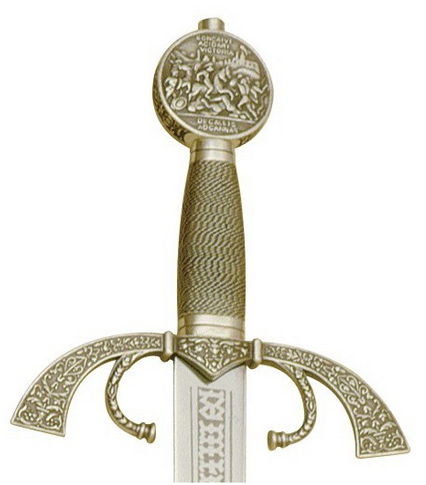 The Great Captain prioritized infantry over heavy medieval cavalry, forming professional and well-trained corps capable of maneuvering and defending themselves in any terrain. He introduced company formations under the command of a captain, promoted the coordinated use of firearms and artillery, and emphasized logistics and supply as fundamental parts of military success. All this, coupled with his ability to raise the morale and sense of honor of his soldiers, transformed the Spanish infantry into a feared and respected force, becoming a model for other European armies.
The Great Captain prioritized infantry over heavy medieval cavalry, forming professional and well-trained corps capable of maneuvering and defending themselves in any terrain. He introduced company formations under the command of a captain, promoted the coordinated use of firearms and artillery, and emphasized logistics and supply as fundamental parts of military success. All this, coupled with his ability to raise the morale and sense of honor of his soldiers, transformed the Spanish infantry into a feared and respected force, becoming a model for other European armies.
In summary, the “Great Captain’s sword” influenced his military strategy not as an individual weapon, but as a symbol of a new warlike paradigm based on professionalization, the integration of arms, and discipline, which laid the foundations of modern armies.
What other gifts did the Great Captain receive from European leaders?
 The Great Captain, Gonzalo Fernández de Córdoba, received other gifts from European leaders in addition to noble favors. Among them, it is mentioned that he was honored with the mayorship of Loja by Ferdinand the Catholic, and it is probable that he received a gala sword gifted by Pope Alexander VI, which is believed to have been used for the oath of the Prince of Asturias. He also received noble favors from King Fadrique II of Naples before turning against him on orders from the Catholic Monarchs.
The Great Captain, Gonzalo Fernández de Córdoba, received other gifts from European leaders in addition to noble favors. Among them, it is mentioned that he was honored with the mayorship of Loja by Ferdinand the Catholic, and it is probable that he received a gala sword gifted by Pope Alexander VI, which is believed to have been used for the oath of the Prince of Asturias. He also received noble favors from King Fadrique II of Naples before turning against him on orders from the Catholic Monarchs.
How is the Great Captain’s sword preserved in the Royal Armory of Madrid?
The Great Captain’s sword is preserved within the great collection of historical weapons of the Royal Armory of the Royal Palace of Madrid, considered one of the richest and most significant armories in the world due to its historical and symbolic value. Specifically, the estoc attributed to the Great Captain is displayed in the first showcase of the museum, alongside other medieval pontifical estocs, although it is currently presented without a hilt. The blade, remarkably bright and with two edges, measures 92.4 centimeters in length and 4.8 centimeters in width, and weighs about one and a half kilograms. Its conservation, like that of the rest of the collection, is framed within the museological standards applied to objects of high patrimonial value, within a protected and controlled space to guarantee its long-term preservation.
The story of the Great Captain’s swords is an epic tale that transcends steel blades and gilded hilts. It is the story of a man who forged an empire with his ingenuity and courage, and whose weapons became symbols of a golden age. Each replica we admire today keeps the legend alive, connecting the present with a past of glories and mysteries.
VIEW MORE OF THE GREAT CAPTAIN’S SWORDS | VIEW OTHER SPANISH HISTORICAL SWORDS
